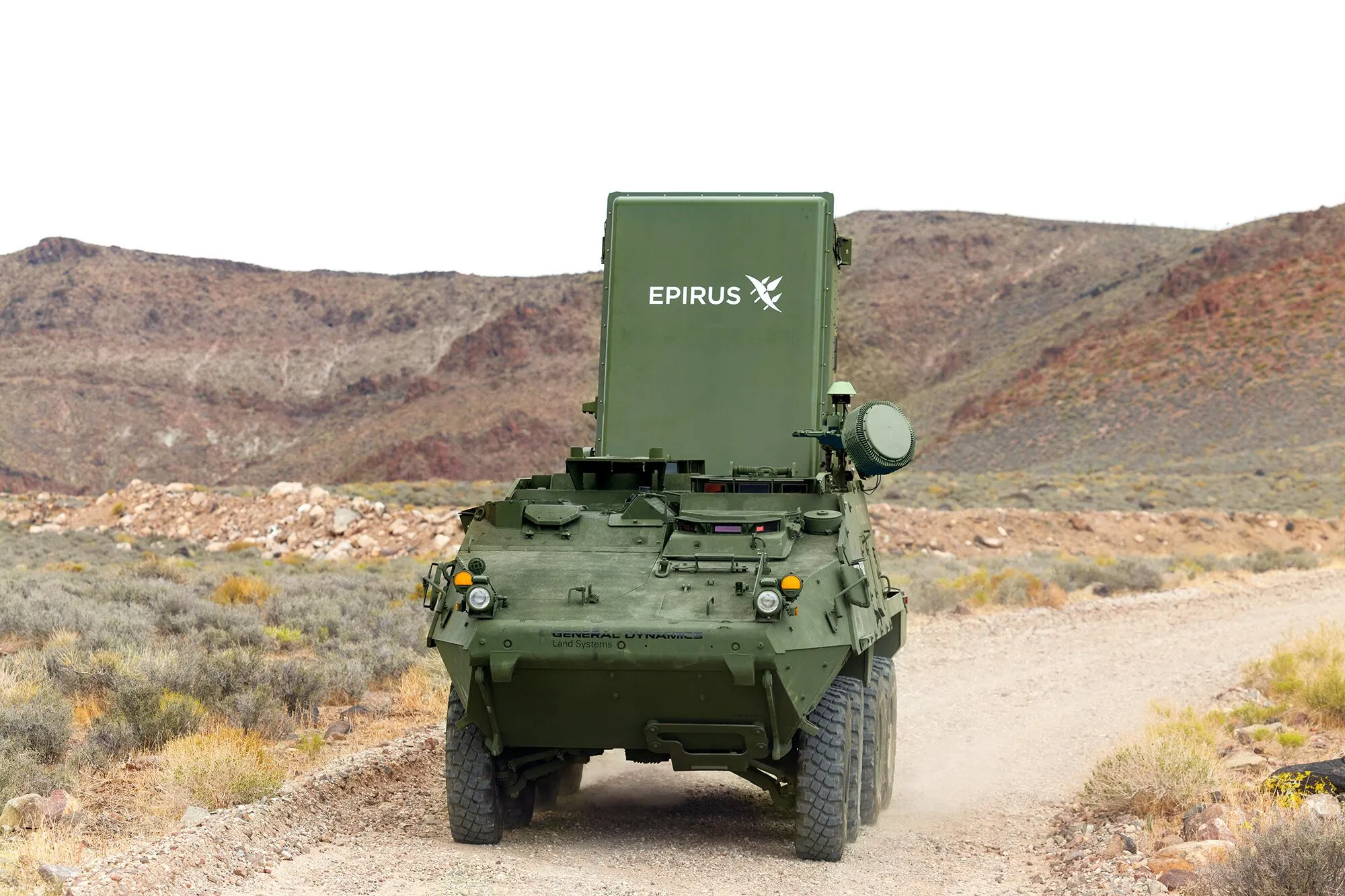In brief
- Epirus, a Los Angeles-based defense company, has developed Leonidas, a high-powered microwave weapon that disables drone swarms without firing projectiles.
- Leonidas uses a wide-area microwave beam to instantly disrupt the electronics of drones, making it effective against mass attacks.
- The Pentagon is exploring its use to defend against coordinated drone threats.
As swarms of cheap, fast drones flood the modern battlefield, Epirus, a Los Angeles-based startup, claims to have a solution: a high-powered microwave weapon that disables drones mid-air, without firing a single shot.
Leonidas is a family of advanced high-powered systems developed by Epirus that uses microwaves to disable drone swarms and other electronic threats.
Named after the famous Spartan king, Leonidas is already drawing interest from the Pentagon.
Unlike laser-based weapons, Leonidas employs a broad microwave beam that disables drones by disrupting their electronic systems.
The effect is immediate and doesn’t require knowledge of a drone’s software or codebase, according to Epirus Chief Technology Officer, Dr. Matt Markel.
“With lasers, you need detailed knowledge of the target to find its vulnerable spots,” Markel told Decrypt. “Otherwise, you’re just burning a hole in a part of the system that doesn’t matter. You have to hit the parts that are critical.”
Markel said microwave weapons like Leonidas can blanket an area, disrupting multiple targets without requiring precise aim.
“The beam for that is typically larger than the target, so you don’t have to worry about the selectivity, and the effects are different,” he said.
In June, Ukraine used swarms of commercial drones to attack targets in Russia. According to Markel, this is the kind of attack Leonidas is designed to counter, citing longstanding military strategies that rely on redundancy and overwhelming force.
“In warfare, we rarely rely on a single point of failure,” he said. “We don’t just send one weapon, we often use multiple to ensure redundancy and amplify effects. We saw that in ‘Spider Web,’ where multiple attacks targeted the same objective.”
Defending against these threats means being prepared to handle multiple threats simultaneously, as even a single breach can cause serious damage, Markel explained.
“The technology is already there. You don’t need a thousand—just 10 or 20 drones can overwhelm defenses,” he said. “That’s what our system is built to handle. It’s designed to counter more than one threat at a time.”
Founded in 2018, Epirus released the first iteration of Leonidas in 2020, and a suite of similar technologies has filled out the company’s products.
In October 2024, the U.S. Army awarded the company a $17 million contract. Five months later, the company announced a $250 million Series D funding round to accelerate production of its Leonidas high-power microwave system.
Coupled with AI, Leonidas can track and neutralize multiple fast-moving threats. To observers, the effect resembles a protective force field, Markel said.
“There's AI throughout the system. We make sure to get the most out of every device—whether that's power efficiency or how we cue sensors and recommend the optimal order to prosecute targets," he said.
While Epirus keeps operational details, like range, under wraps, Leonidas has already participated in joint military exercises with U.S. allies.
Beyond military use, Markel said Leonidas could help law enforcement neutralize unauthorized drones near government sites, among other things.

